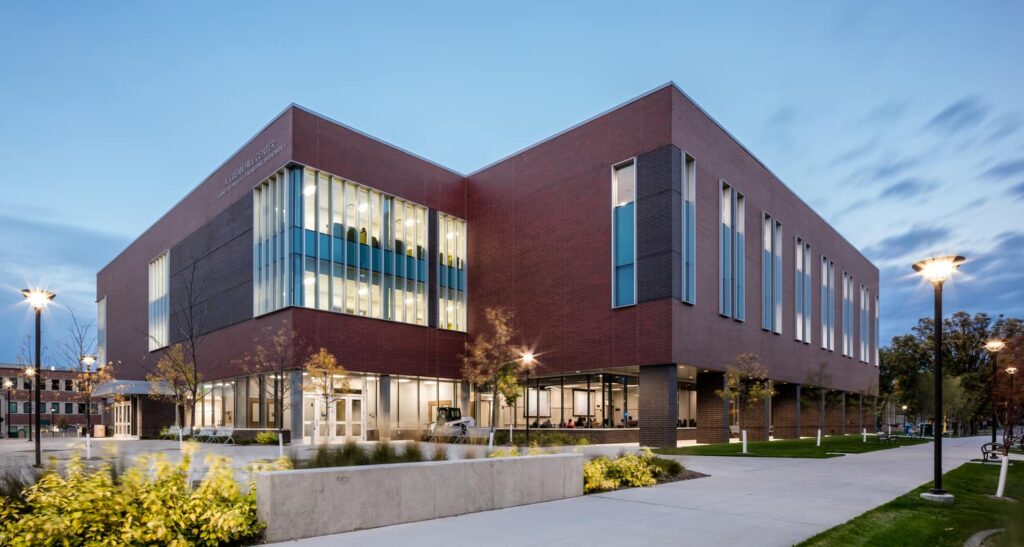SAINT PAUL – Growing awareness of the ways in which physical learning environments influence 21st century learning goals is encouraging new exploration into why space matters to the quality and character of the undergraduate learning experience.
At the Annual Interior Design Educators Council (IDEC) Conference in Boston on March 8, BWBR’s Stephanie McDaniel, AIA, LEED AP, will join North Dakota State University’s Professor Susan Ray-Degges to present insights gained through an exploration of informal student collaboration spaces and active learning classrooms in the campus’ new STEM classroom building.
Ray-Degges, a professor and interior program coordinator at North Dakota State University, and McDaniel, an architect and principal at BWBR, will present their effective data-gathering process (which included teaming with NDSU interior design students) and findings from a post-occupancy evaluation for NDSU’s new A. Glenn Hill Center for STEM Education.
The post-occupancy evaluation was coauthored by Ray-Degges, McDaniel, Dr. Ron Degges, an associate professor of practice in statistics at NDSU, and Stefnee Trzpuc, CID, EDAC, LEED AP, a design research and knowledge management specialist at BWBR. The team employed the study to identify classroom features that support student collaboration and student-faculty interaction, as well as how collaboration spaces encourage learning activities outside the classroom.
“We know that students learn more when they construct their own knowledge. When they learn the content for themselves through group learning, rather than being lectured to, they have better comprehension and retention. In our design, we try to support that collaborative learning,” McDaniel informed. “The building design can support collaborative learning in the classroom through the use of white boards, grouped seating, and display monitors. We believe that every space should be a learning space and support collaborative learning outside the classroom by providing a wide variety of choices for students — open comfortable seating, alcoves, and enclosed study rooms.”
Ray-Degges’ and McDaniel’s presentation, “Unleashing student voices on a college campus. A post-occupancy evaluation for a STEM building in higher education,” will be a part of IDEC’s Boston 2018 Human-Centered Design Conference, which will be held March 7-10. The IDEC conference gathers scholars, educators, and designers to discuss the role of the interior environment on the wellbeing of human users through the lenses of culture, pedagogy, practice, social impact, and beyond.








